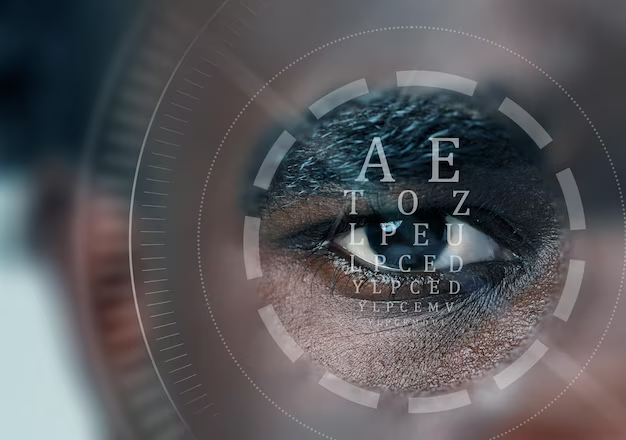Seeing Clearly: Understanding How Cataracts Impact Vision
Imagine looking through a foggy window all day. That’s a bit like what having cataracts can feel like. But what exactly are cataracts, and how do they affect your vision? This guide aims to unpack everything you need to know about how cataracts impact your sight—and offer some helpful insights along the way.
What Are Cataracts?
Cataracts are a common eye condition where the lens of the eye becomes cloudy, leading to a decrease in vision. The lens, positioned just behind the iris and pupil, helps to focus light onto the retina, enabling clear vision. Over time, as cataracts develop, this clarity diminishes.
Causes of Cataracts
Understanding the causes of cataracts can be illuminating. Age is the most prevalent factor, as most cataracts occur as a natural part of the aging process. Other contributing factors might include:
- Genetics: A family history of cataracts can increase your chances of developing them.
- Lifestyle Choices: Smoking, excessive alcohol consumption, or prolonged exposure to sunlight can play a significant role.
- Medical Conditions: Diseases like diabetes can heighten the risk.
- Medications: Certain drugs, particularly long-term steroid use, may contribute.
Understanding these elements can be essential for prevention and management.
How Cataracts Affect Vision
Now, let's break down the specific symptoms and changes in vision that come with cataracts. As cloudy patches form in the lens, they begin to interfere with light passing through and reaching the retina. This action manifests in several ways:
Blurred Vision
Blurred or Cloudy Vision: This is often the most noticeable symptom. You may feel like you're looking through a soft-focus lens or dealing with a persistent mist in your eyesight.
Sensitivity to Light
Increased Light Sensitivity: Bright lights, glares, and halos around lights at night become more bothersome, making nighttime driving particularly challenging.
Difficulty with Color Perception
Changes in Color Vision: The world may appear more yellowish or faded because cataracts can diminish the vibrancy of colors, disrupting how you perceive hues.
Double Vision
Double Vision: Seeing double in one eye can occur, but it's worth noting that this symptom happens early and usually resolves as the cataract matures.
Stages of Cataract Development
Cataracts progress gradually, typically moving through several stages, each with different levels of impact on vision.
Early Cataract
In the early stages, your lens may develop small cloudy spots. Vision changes at this point are generally mild, and many people might not notice significant symptoms, although a slight blur or light sensitivity may appear.
Mature Cataract
At this more advanced stage, the lens can become fully cloudy. The symptoms are more pronounced and can severely interfere with daily activities such as reading or driving.
Hypermature Cataract
This is the last stage, where the lens can swell or shrink significantly, potentially leading to inflammation or increased pressure in the eye.
Managing Cataracts: What You Can Do
While cataracts might sound daunting, managing them can be relatively straightforward if approached wisely.
Lifestyle Adjustments
- Sun Protection: Wearing sunglasses that shield from UVA/UVB rays can help slow cataract progression.
- Healthy Lifestyle: Maintaining a balanced diet rich in vitamins like A, C, and E, and omega-3 fatty acids can also be beneficial.
- Regular Eye Exams: Consistent check-ups allow for early detection and timely management.
When to Consider Surgery
Eventually, many people with cataracts opt for surgery when the condition begins to impair daily life. Cataract surgery involves replacing the cloudy lens with an artificial one. It’s a commonly performed procedure and is typically safe with a high success rate. Discussing your options with a healthcare professional can help you decide the right timing for surgery.
Frequently Asked Questions about Cataracts
Below are some common concerns you might encounter when dealing with cataracts:
Is there a way to reverse cataracts naturally?
Unfortunately, once a cataract forms, it cannot be reversed with diet or lifestyle changes alone. These strategies are more about prevention and management.
Are cataracts painful?
No, cataracts themselves are not painful, but the strain of trying to see clearly can lead to discomfort.
Can cataracts return after surgery?
Cataracts, once removed, do not return. However, sometimes the lens capsule that holds the artificial lens can become cloudy, a condition known as posterior capsule opacification, which can be treated with a quick laser procedure.
Visual Summary of Key Takeaways
Here’s a visually engaging breakdown of practical tips for managing and understanding cataracts:
- 👀 Stay informed: Regular eye check-ups are vital.
- 🌞 Protect your eyes: Wear sunglasses that block 100% UV rays.
- 🍎 Eat healthily: Diets rich in antioxidants support eye health.
- 💡 Avoid glare: Use high-quality lighting to reduce strain.
- 🏥 Consult timely: Speak with an eye specialist when vision deteriorates.
Understanding Your Next Steps
Recognizing how cataracts affect vision is the first step toward managing their impact on your life. Whether through proactive lifestyle choices or exploring surgical options when necessary, informed decisions lead to better eye health. Keep these insights in mind, and don't hesitate to engage with healthcare professionals about any personal concerns.
By gaining a grasp of the nature and trajectory of cataracts, you're well-placed to maintain clear vision and enjoy a vibrant view of the world around you for years to come.
